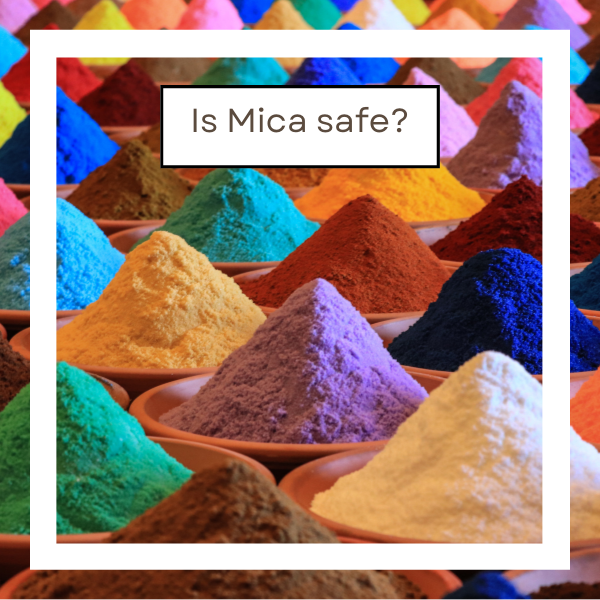
In this blog post, we’ll look at:
- Natural v Synthetic Mica
- Are mica powders safe?
- Which type do I use in my wax melts?
- Are your cosmetics are made using natural or synthetic mica?
Natural v Synthetic Mica
Mica Powders are widely used in cosmetic, personal care products, arts and crafts and renowned for their shimmering and colourful qualities.
Regardless of natural or synthetic origin, mica powders enhance products with shimmer and shine. While available in various colours, they are distinct from pigments or dyes and do not dye or stain the skin unless excessively applied.
Natural mica powders are derived from mineral stones; however, their extraction poses concerns like child labour and the presence of potentially harmful minerals. While some companies strive to source mica ethically, actual verification of ethical practices is challenging unless they visit the source directly.
In contrast, synthetic mica powders mimic the natural version without the associated risks. They lack negative or toxic minerals and eliminate the need for mining, ensuring a more ethical and safe production process. Additionally, synthetic mica powders are free from sharp edges that might cause microscopic skin damage.
Mica extraction occurs in over 35 countries, though precise production data is challenging to determine due to the informal nature of the mica mining economy in some regions. India and Madagascar emerge as the top two exporters of sheet mica, with China and Brazil following closely. Notably, India and Madagascar are prominently linked to child labour, according to research study on the global mica supply chain conducted by SOMO on behalf of Terre des Hommes, Netherlands.
Are all Mica powders safe?
The use of Natural Mica in cosmetic and personal care products is discouraged due to the inherent risks associated with potentially harmful minerals and sharp edges. These concerns highlight the need for alternative, safer ingredients in such formulations.
Synthetic Mica (otherwise known as Synthetic Fluorophlogopite) mimics the effect of natural mica but is made in a lab. Just like natural mica, the synthetic alternative gives a glittering finish to makeup.
Synthetic mica, being lab-created, boasts heightened purity, ensuring its safety for use in cosmetics, personal care products, and beyond. While it is typically available in smaller quantities, the higher price reflects its superior quality.
What type of Mica is found in Wick’d products.
Our products exclusively feature cosmetic-grade synthetic mica, aligning with our commitment to sustainability. We prioritise environmentally friendly sourcing, guaranteeing that the shine and shimmer in your favourite melts are ethically sourced, unlike those containing plastic or mineral-based glitters.
Cosmetic Mica
So how do you know if your cosmetics are made using natural or synthetic mica?
To find out whether the mica in your cosmetics is synthetic or natural look out the following information on your labels.
Natural mica should be listed as ‘Mica’, ‘Potassium Aluminium Silicate’ or ‘CI 77019’ on the quantitative ingredients list, don’t be fooled by companies who claim to have cosmetic grade natural mica, or cosmetic grade mica minerals. Synthetic mica will be listed as ‘Synthetic Mica’ or ‘Synthetic Fluorphlogopite.’ You should find all the product ingredients listed on the packaging.

